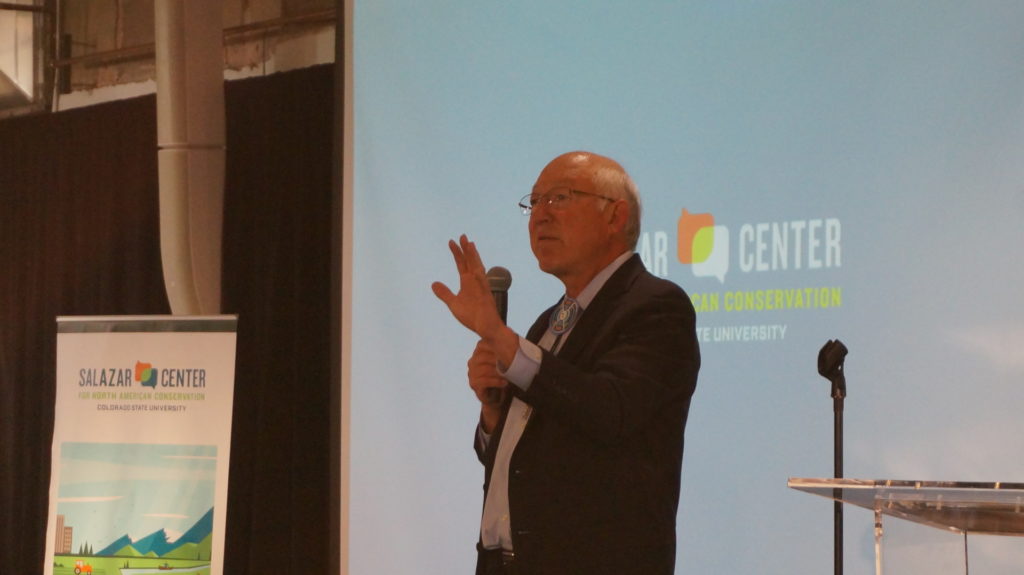
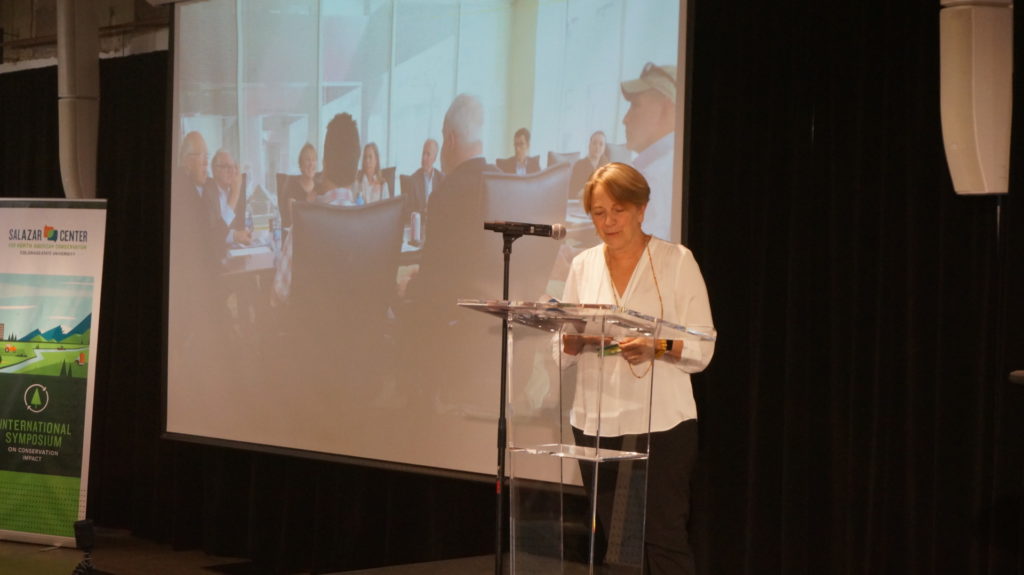
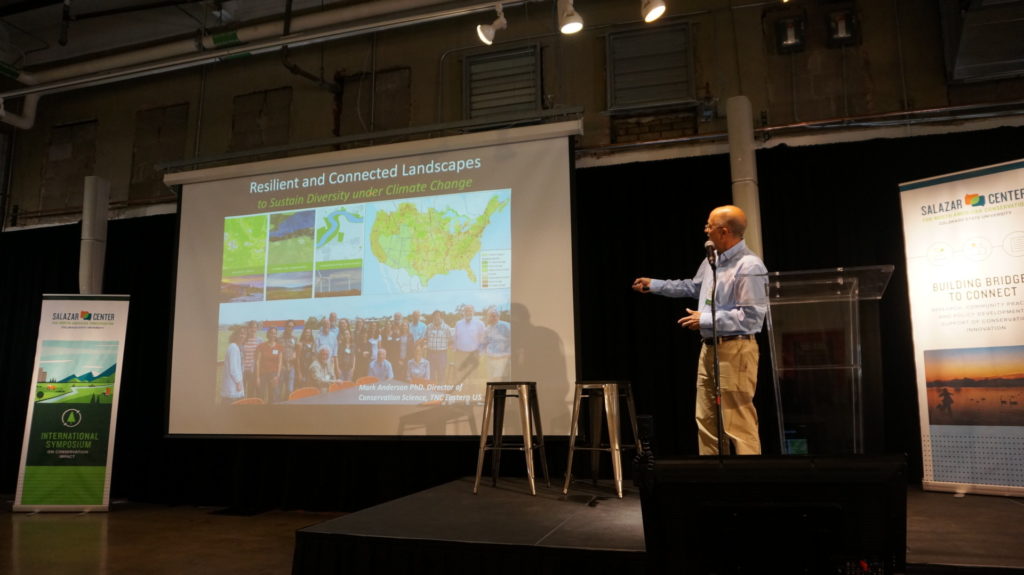
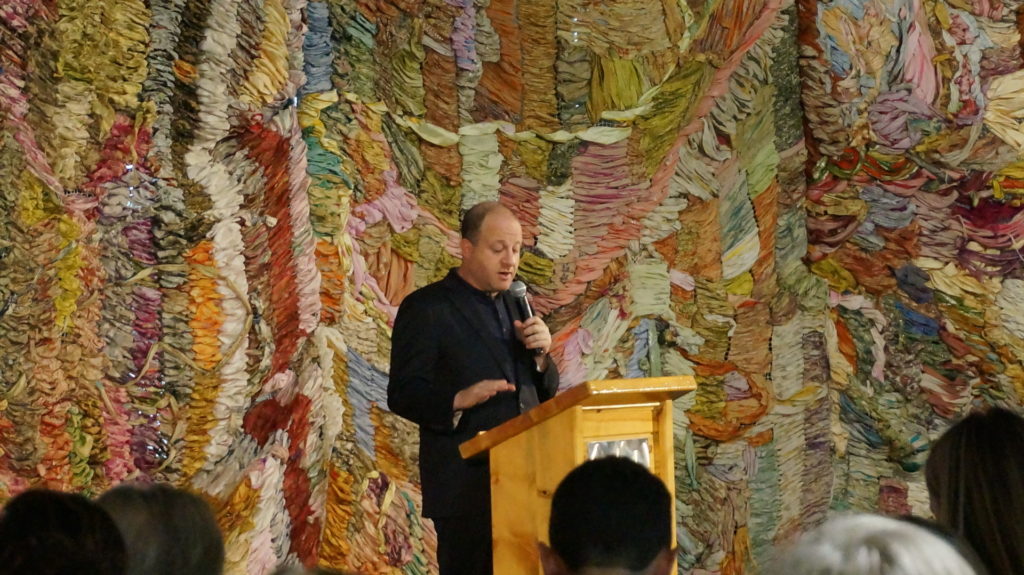
Photos by Kate Burgess
More than 200 conservation experts, researchers, grantmakers and policymakers gathered in Denver on Sept. 24 for the inaugural International Symposium on Conservation Impact, hosted by Colorado State University’s Salazar Center for North American Conservation.
Some of the speakers shared grim statistics — 1 million animal and plant species around the world are now threatened with extinction — and described the ways that conservation efforts are currently failing. But they also shared reasons for optimism, detailing plans to develop new parks, conservation areas and green spaces as well as new corridors connecting protected areas to one another.
“2020 is the year for global action,” said Gary Tabor, founder and president of the Center for Large Landscape Conservation, a nonprofit based in Montana. “We are living in a more crowded world, and we have ambitious targets. Everyone is talking about how we have to do more, quicker and faster,” he said.
Tabor said that conservationists across the country and around the world all have one thing in common — they don’t talk with each other. “They’re reinventing the wheel,” he added. “There’s much wisdom to be shared.”
During the symposium, the Salazar Center announced a $100,000 incentive prize for nonprofits and other conservation-centric groups throughout North America to come up with the best ideas for creating meaningful change.
The Center for Large Landscape Conservation presented this video on landscape connectivity during the International Symposium on Conservation Impact. Video by Jaime Rojo
A catalyst for action
Former U.S. Interior Secretary Ken Salazar, the center’s namesake, kicked off the day by describing some of the important challenges that conservationists face today.
“The center will serve as a clearinghouse of best ideas in terms of what we do for conservation, and second, it will serve as a catalyst to action,” said Salazar. He also shared some of the successful landscape connectivity projects he managed while serving in the Obama administration.
In a nod to the center’s initiative on diversity and inclusion, Salazar described how “Native American brothers and sisters have a very special connection to the land. It’s really about an inclusive America, and we should honor the strength that comes through diversity.”
CSU System Chancellor Tony Frank acknowledged Salazar’s role in creating the new center at CSU.
“Your leadership in so many ways …. Is in large part why we’re here,” he said. “We’ll make sure you’re proud of the center.”
Frank and other speakers acknowledged the timeliness of the symposium, coming on the heels of the student walkout for climate change on Sept. 20, when millions of young people from around the world took to the streets as a form of protest.
“How do places connect and how do we work across borders? We want to bring people together to get some really important work done,” says our director @conoverbeth #ConservationImpact2019 pic.twitter.com/D5hoPRt8ot
— Salazar Center for North American Conservation (@SalazarNAmerica) September 24, 2019
“Young people are fearful for the health of the planet,” Frank said. “Their fears are backed by science. Given the enormity of this challenge, partnership and collaboration are essential.”
‘Effects of climate change are not up for debate’
Denver Mayor Michael Hancock was among the officials who welcomed attendees to the symposium. Colorado Gov. Jared Polis also talked landscape connectivity during a lunchtime talk.
In his remarks, Hancock described how he works to ensure that Denver continues to be a “city within a park,” citing his work on urban waterways, green spaces and wildlife conservation as “natural solutions” to climate change, as well as a way to achieve health equity.
“Now, more than ever, any conversation about improving or expanding our green spaces must include how to address climate change,” he said. “The effects of climate change are not up for debate. It’s happening right now.”
Beth Conover, the Salazar Center’s director, said that there is remarkable work going on around the world in conservation by CSU scientists. However, many residents in Colorado are not aware of that research and the “unsung heroes.”
“What are the continent’s biggest conservation challenges, what is important … and what difference can we make?” she asked. “These questions offer a lot of opportunity.”
Cristina Mormorunni, director of U.S. Field Conservation and regional director of the Rockies Program at the Wildlife Conservation Society, discussed the vision for “rewilding” North America.
“Increasingly, what we recognize as a science-driven organization is that we need to think about socio-political and cultural connectivity,” Mormorunni said.
“Collaboration across borders is critical - because wildlife don’t know the meaning of those boundaries,” says @GovofCO Jared Polis. We’re so honored to have our home state’s leader here today for #ConservationImpact2019 pic.twitter.com/sfRD7gSbKj
— Salazar Center for North American Conservation (@SalazarNAmerica) September 24, 2019
Canada’s success, challenges in conservation
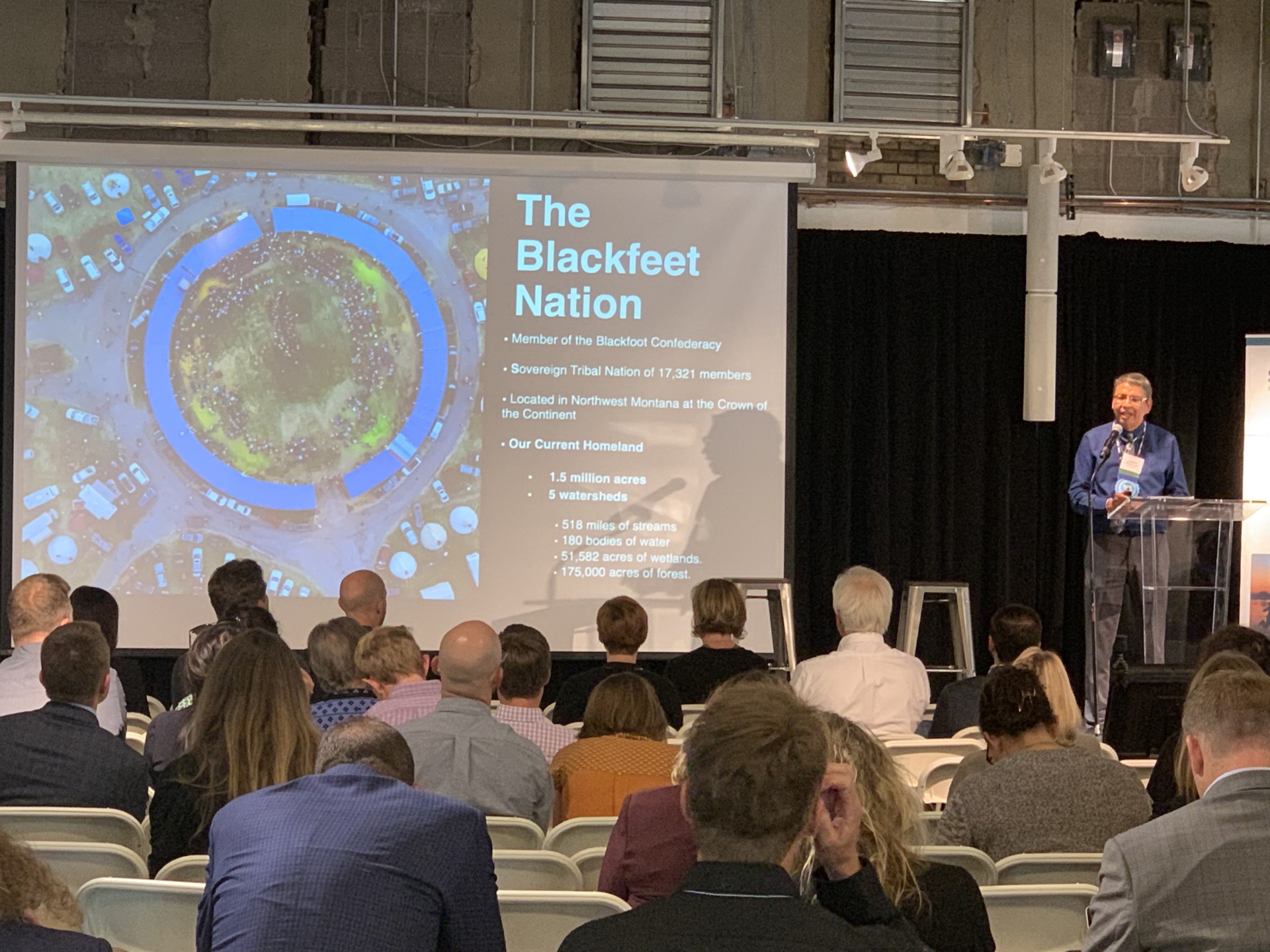
Loren BirdRattler, a planner with Blackfeet Nation, leads a presentation at the symposium.
Alison Woodley, strategic adviser for the Canadian Parks and Wilderness Society, provided examples of conservation success in her country, which has protected vast tracts of land in the past 10 years. At the same time, she said, “We, too, are in trouble. Biodiversity is in trouble in Canada.”
Earlier this year, leaders from the Łutsël K’e Dene First Nation signed agreements with the Parks Canada Agency and the Government of the Northwest Territories to establish Thaidene Nëné — “Land of the Ancestors” — as a large new protected area in the Northwest Territories.
“This is how conservation is done,” she said. “It’s very powerful and goes right to the heart.”
Later in the day, Loren BirdRattler, a planner with the Blackfeet Nation in Montana, described how the tribe hopes to create a new national park that would span the United States and Canada.
“We can catalyze connectivity, link ecosystems, ‘rewild’ the landscape, protect regional plant biodiversity and conserve entire watersheds from headwaters to lower elevation,” he said.
“We can catalyze connectivity, link ecosystems, ‘rewild’ the landscape, protect regional plant biodiversity and conserve entire watersheds from headwaters to lower elevation.”
— Loren BirdRattler, planner with Blackfeet Nation
BirdRattler encouraged scientists and policymakers to visit Indian lands, as a way to learn more about conservation efforts. The Blackfeet invest in tried and proven conservation methodologies, and substantiate that with Western science, he said.
CSU President Joyce McConnell closed out the day’s events by announcing a new $100,000 Conservation Impact Incentive Prize sponsored by the Salazar Center for North American Conservation. She also provided details on a $10,000 prize that will recognize CSU faculty for work that demonstrably produces conservation impacts.
“While we hope to hear from the ‘usual suspects,’ we hope also to attract some new talent to this conversation,” she said.